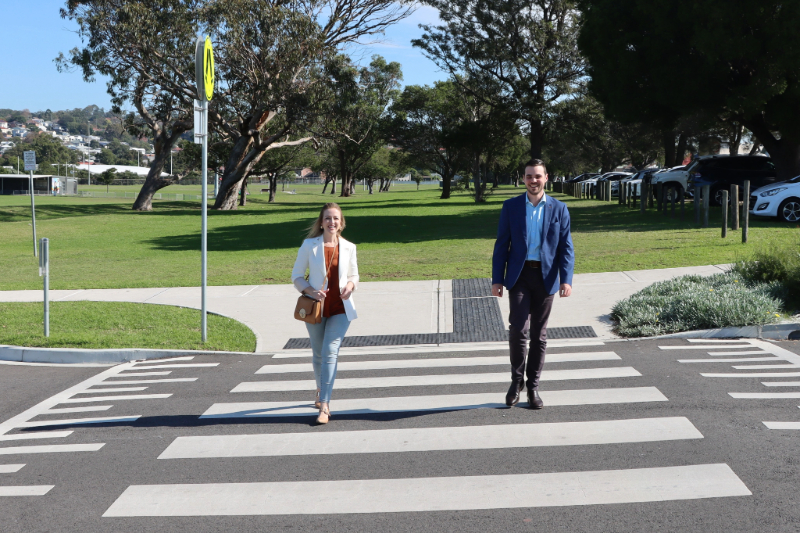Australia’s biggest festival of light, music, ideas and food kicks off in a blaze of colour this week, with visitors, especially families, urged to plan ahead to maximise their enjoyment.
After 3.48 million people attended Vivid Sydney 2023, another bumper turnout is expected over 23 cost-of-living-busting nights between Friday 24 May and Saturday 15 June.
Visitors are asked to remain considerate of others and enjoy the sense of community throughout the CBD and surrounds, including the Sydney Opera House, The Rocks, Circular Quay, Royal Botanic Garden, Walsh Bay, Barangaroo, Machine Hall Precinct, Darling Harbour, Carriageworks and The Goods Line in Ultimo.
Families with younger children and prams are advised to attend on typically quieter nights, Monday to Thursday, and for those wanting to experience the entire Vivid Sydney Light Walk, consider spreading the experience across three nights.
Key road closures will be in place throughout the Sydney CBD, Circular Quay, Darling Harbour, Haymarket, The Rocks and Walsh Bay with parking restrictions daily from 3pm and road closures by 5pm each night of the festival, along with additional closures on Fridays and weekends.
Local residents are encouraged to familiarise themselves with the road closures as access to properties and driveways will be restricted while roads are closed each night.
When planning travel, it is strongly encouraged to leave the car at home and take public transport to avoid any traffic delays and get the best out of your Vivid Sydney experience. All Vivid Sydney precincts are within short walking distance of major transport hubs and will have plenty of extra services running to help get you to and from the city.
Due to road closures, large crowds and weekend trackwork, transport services will operate differently on Friday nights and weekends during the event.
Commuters are advised to regularly check for updates on Transport for NSW’s Trip Planner, which will be continuously updated to show travel options, as will other map providers like Google Maps.
Visitors are also reminded that while ferries are a great way to see the Vivid Sydney lights, they are very popular and will reach capacity early, particularly on weekends. Expect long queues, have a back-up transport option in mind and allow plenty of extra travel time.
During the Vivid Sydney drone shows on Saturday 8, Sunday 9 and Saturday 15 June, ferries to and from Circular Quay will be affected between 9pm and 9.30pm.
Visit the Vivid Sydney website to plan your trip. It also includes transport details, information on road closures and program highlights.
Minister for Jobs and Tourism John Graham said:
“On Friday, the bright lights of Vivid Sydney will once again transform our city, mesmerise, delight and inspire.
“The number of visitors to Vivid Sydney in 2023 was a staggering 3.5 million and it has become such an important night out for families across Sydney and the state who are doing it tough due to the cost-of-living squeeze.
“Vivid Sydney is also a welcome period for businesses in the CBD during the colder months.”
Minister for Transport Jo Haylen said:
“Vivid is an unmissable time of the year for Sydneysiders and visitors alike, but the best way to enjoy it is to leave your car at home and use public transport.
“We’ll have 400 additional rail services running on Fridays, Saturdays and Sundays throughout the Vivid season, as well as additional bus and light rail options.
“People will have three weeks to enjoy the lights, sounds and spectacles of Vivid. There will be no trackwork in the city over the three weeks of Vivid, but the critical maintenance of our railway will continue. Passengers should check the Opal app where required and make the most of free Park and Ride facilities on other lines.”
Minister for Police and Counter-terrorism Yasmin Catley said:
“The NSW Police Force will have a visible presence across Vivid to help ensure everyone stays safe while enjoying this brilliant event.
“Large crowds are expected, so be mindful of your own safety and watch out for those around you.
“The NSW Police Force work around the clock and sacrifice so much to keep us safe. If you see an officer – thank them.”

 Cr Adamczyk and Deputy Lord Mayor Declan Clausen use the pedestrian crossing at New LambtonDeputy Lord Mayor Declan Clausen said encouraging more people to walk is important for the wellbeing of our community and the liveability of our city.
Cr Adamczyk and Deputy Lord Mayor Declan Clausen use the pedestrian crossing at New LambtonDeputy Lord Mayor Declan Clausen said encouraging more people to walk is important for the wellbeing of our community and the liveability of our city.